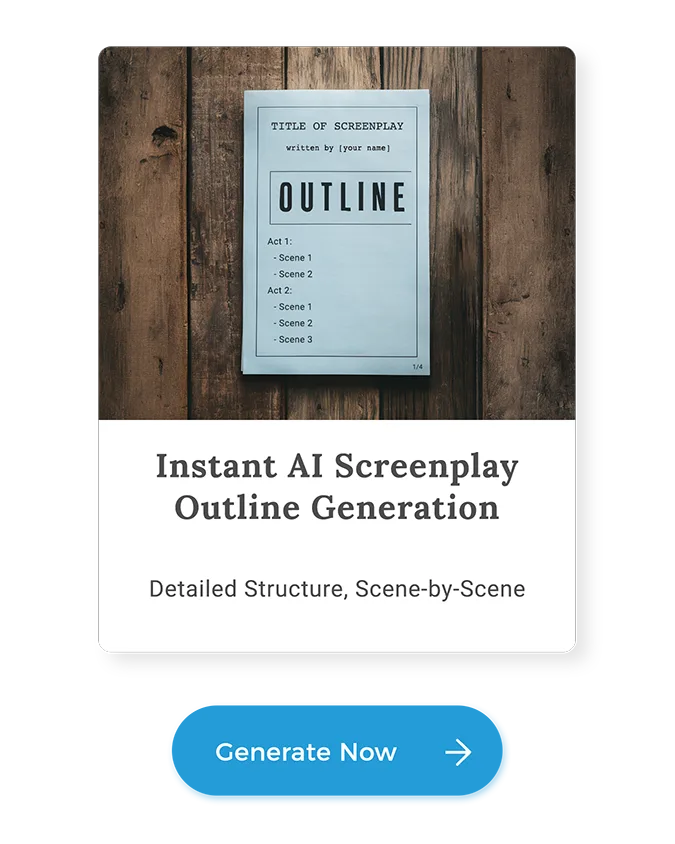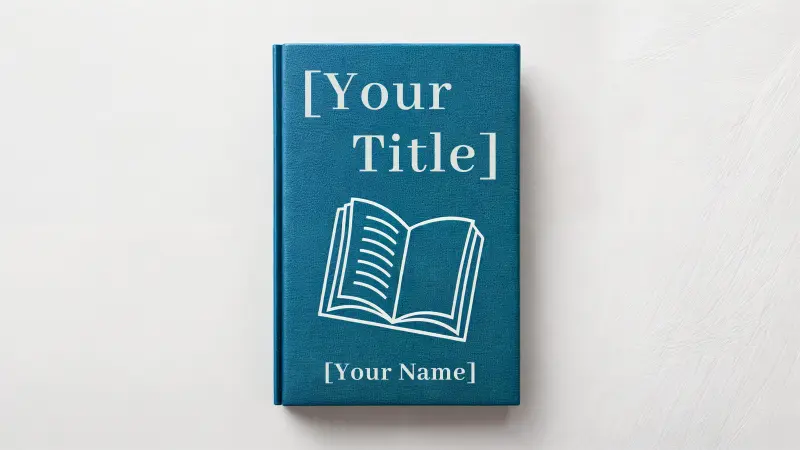Interested in learning how to write a screenplay?
A significant part of writing a successful script lies in understanding the proper screenwriting format. Beyond that, it involves a blend of creative storytelling, character development, and knowing the right tools and techniques. By mastering these elements, you can bring your cinematic vision to life and captivate your audience from the first scene to the last.
The following steps will help you with all facets of your screenplay:
Know the difference between spec and shooting scripts
Use a standard format
Do your plotting
Edit and ensure fluidity
Be original
Choose software to help you
The front page
The first page
Scene headings
The action
The dialogue
Parentheticals
Transitions
Title cards
The montage
Once you understand the kind of ‘language’ of screenwriting – the dynamics of writing a good screenplay, then you will be well on your way to putting the images you have in your head, onscreen. So let’s get started!
How to Write a Screenplay
A few rules of thumb to follow when writing a screenplay:
Use the industry standard script format
Write in courier 12 pt font
Know your logline and refer to it when you are lost
Plan your script
Write a lot (especially if you are averse to planning)
Character development
Show not tell
Have a writing routine
Make every word count
In the following, I will go into a lot more detail about most of the points I just made. The above are the very basics and will give you a jump start if you’re itching to get down your first scene. For a more comprehensive and sustainable way of writing, read on.
1. Spec and Shooting Scripts to Write a Screenplay
Before you even think about the format make sure you know what your script is for.
Spec scripts are written on speculation. You are not being paid to write it, but are doing so in the hopes that someone will buy it. It’s therefore extremely important to follow already established screenplay writing rules.
A shooting script has already been purchased and is therefore a production script, ready to be used on set. It has extra technical notes on shots, cuts, edits, etc, that you should never find in a spec script.
2. Why Using a Standard Format Matters
Want to know how to write a script? Start by formatting it properly.
If you are only writing for fun, the script format isn’t a big deal, right? Wrong. Use the standard format matters, because it will make filming easier. It will also look more impressive and you will have all of the tools and knowledge you need to write every part of a script.
But it’s not necessary. You can quite happily get along without it, especially if you’re making a short and small production between friends. You can write well without it (especially if you are going to make a short film in your backyard with your phone). So, why bother?
Well, several reasons:
The first is convenience. If you have a standard-length script (90-120 pages) then it is simply a lot clearer for the actors to read if the dialogue is in the center of the page. Every element of the screen (and what you do on set) has its particular placement on the page, and that makes shooting the film an easier ride. Trawling through your notes late at night when you’re trying to get that last take is not fun for anyone. Especially, for the actors who are not getting paid for it.
It tells you how long your script will take to shoot. No, it does not become a magical timekeeper. However, each page of a script using a standard screenplay format averages out at about one minute of screen time. So you know how long you have until your next tea break while shooting. And if you even have enough writing for a feature-length film.
You might be considering pitching your script so you can sell it. If this is the case, using the right format is not an option, it’s a necessity. Much like a novel or stage play, scripts for the film have their structure and musicality that a professional who has seen thousands of them can spot in a heartbeat. They can also see one that has not properly been formatted just as easily.
You want the best chance to succeed. Many screenplays get tossed in the trash. But at least they likely took a look at the first couple of lines or even read the first page of their script. If it isn’t properly formatted, I guarantee they won’t even begin reading.
It could be the most wonderful work of art ever created, and it would already be in the trash. This is because a lack of formatting implies negligence on the part of the writer. ‘If you can’t even format it right,’ they will think, ‘then what is the writing going to be like?’
And I hate to say it, but they have a point. If you’re serious about screenwriting, knowing how to format will help you to look professional. It’s that simple.
It doesn’t mean your movie script will be sold. But it at least gives you a chance.
Reading about how to write a screenplay successfully will always put you at an advantage. So do that.
To start with, I would recommend Save the Cat by Blake Snyder. This witty book has been read by pretty much anyone who wants to write for the big screen (the tagline being ‘the last book on screenwriting you’ll ever need’).
Don’t judge a book by its tagline. You’ll want to read more if you’re serious about this. And consume as many films as you possibly can. (Not the worst homework in the world.)
Another book I would recommend is The Hero’s Journey or The Hero with a Thousand Faces by Joseph Campbell. Both are great for helping to understand story and character archetypes, which will play a role in your writing, whether you like it or not.
There are other theories on story, Campbell’s is just the classic text that influenced big hits such as Star Wars, The Matrix, The Lion King, etc.
The Screenwriter’s Bible by David Trottier is another book that everyone and his mum have read in preparation for writing a script.
If you’re writing a romantic comedy or any other genre, you’ll want to hone in on that and become more knowledgeable about that, as well as film generally. Take an afternoon off to watch Love, go on, I dare you.
Read for your appropriate field or subject of interest.
Go on a course led by a professional screenwriter and take what you can from their pool of knowledge.
There comes a point where the only thing that will make a difference to your writing, is to write.
The Process of Script Writing
Writing should be fun. But it is not always. It can be frustrating and exasperating. But the thirst to do it is what draws you back to it. If not, consider doing something else with your time!
The main principle is to be able to have a consistent practice. Write in your way. Write when works for you. Maybe you’re a planner, or maybe you like the plot to unfold. Whichever it is, you will need a lot of drafts written, a lot of scenes cut, and a lot of edits and rewrites.
If your writing sucks, then great! As long as you’re writing, that’s all that matters. The more you write, the more the quality of your work will improve.
Stay humble and don’t aim for anything too wonderful. If you get stuck, go for a walk or write that scene that you always wanted to write. If you’ve already written it, rewrite it. It couldn’t hurt.
Creating an appealing hero/ heroine is an important part of the writing process and will inevitably make or break your screenplay.
No one is going to watch a science fiction film if they don’t care for the main character, no matter how compelling your idea.
A logline is just as important. If you don’t know what your entire script is about, how are you ever going to be able to sell it? The essence of a script should be able to be diluted down to 20-25 words. And it should make anyone who hears it say something along the lines of ‘huh, that’s interesting.’ If the ‘what’s it all about’ doesn’t grip you with anticipation and fill you with ideas, then perhaps you need to rethink what you want to write about.
Use Squibler to find ready-to-work and industry-standard formatted screenwriting templates to save more time and become 50% more efficient.

3. Plotting
Planning your script can be challenging. It will make writing your scenes and dialogue immeasurably easier to write once it is done. You do not have to plan. It’s just good to note that you’re making things harder for yourself if you don’t.
During the experimentation phase, when you might not have the plot set out, you can start by writing scenes on cards and moving them around to see how the beast (aka your film) interacts with itself and how moving one scene from the middle to the beginning (as happened in Bridget Jones’ Diary) can completely change the whole feel of the thing.
Many writers use Squiber, which helps with the structural elements of creating a story. Its Smart Writer offers you various options to improve your script.
4. Editing and Fluid Movement
Bear in mind that a script is one of the most fluid pieces of writing out there. Possibly THE most. It is living, breathing, and alive. This is because it continually evolves throughout the entire process.
You will undergo numerous edits. First, to get it good. Second, so that your editor believes it’s good. Next, if it’s sold, there might be things the industry players want to change.
Once it’s on set, it is changed for that purpose. And then there’s that line that the actor just can’t say. And then a scene that is cut during the video editing process.
It’s exciting. However, it can be heartbreaking at times. But at least it’s your damn script. And that’s something to scream about.
In Squibler, you can write, edit, organize, and format all the sections of your screenplay in one place so you don’t have to jump between tools.
5. Don’t Try to Be Original, Be Original
Don’t try to reinvent the wheel. One mistake that new writers will be tempted to make is that once they know the typical structure of the genre of their choice, they want to break all of the rules.
You can do this, but it might not serve in your favor unless you have a good reason for it.
Certain structures and uses of dialogue or action (by the writer) are repeated for a reason – they work. Thankfully, someone who has come before you already made the mistake you are about to make. Maybe you need to do this as a part of your process, but ideally, you won’t give in to temptation.
The originality of your writing should come out/be evident in what you write within those already well-defined structures. That is what will make you shine. And will maintain a sheen of professionalism needed to be considered amongst the best scripts.
6. Choose a Script Writing Software
There is quite a range of screenwriting software out there to choose from. You can choose anything, from typing it out old-school on a typewriter (a very cool choice, but a hell of a faff these days) to using the most up-to-date and easily accessible software available for download online.
Scriptwriters develop, organize, keep, and maintain their work through Squibler. It is an AI writing tool that allows you to write using its AI technology. With this tool, you can format and organize your notes and plot your novel with 50% more efficiency.
Using Software can help you write any art, assist you in writing a script, and take some of the stress out of planning it all yourself, without any structure.
Screenwriting software is similarly made to help you plot your script. The main consideration will be what you’re writing your script for. If it’s for an indie production and you don’t want to spend much (or any) money, then there are plenty of budget resources out there. These are ideal for the newbie screenwriter not quite ready to submit their script (Amazon’s Storywriter, WriterDuet, Celtx, Fade In).
The great thing about using these programs is that they all have a basic screenplay format template, already formatted and ready for you to use. So you don’t have to worry about spacing. You only have to remember which section of the script you are writing at any one moment (dialogue, action, parentheticals, etc.).
You can also use a Word or Office document and work out all of the correct spacing. But I honestly have no idea why you would, unless you get a kick out of (measurements and) the anatomy of a standard script format.
If you are ready to start selling your script (or seriously intend to in the future), then I would advise investing in one of the more upmarket and slightly more expensive versions of this software (Final Draft, Magic Movie Screenwriter). They are also great if you have the money and think you could benefit from their useful features, such as index cards, storyboards, storymaps, breakdown reports, call sheets, and/or professionally authored templates.
Final Draft is the industry standard, but there are others (Magic Movie Screenwriter, Celtx) that work just as well. If you want to be on the safe side, it’s Final Draft all the way. (Note: this is not an endorsement. Final Draft file and PDF formats are the standards to send to industry professionals.)
All of these are good, but what is better than using an AI Book Writing tool that allows you to do all the work just with it? Squibler is an advanced AI-powered book-writing, novel-writing, and screenplay-writing tool that enables you to create content with just one click, leveraging the power of AI. You need to explain your idea to it, and it will generate the exact scene for you. It comes with features like expand, rewrite, describe, visualize, and more, which you can use to become more efficient compared to using other generic tools.
If you haven’t already, go and install one of these software. You will surely come back to Squibler.
7. Front Page/Fly Page
To start, this one is an easy page to write. It should be simple, elegant, and minimalist. All writing should be in Courier, size 12. The first page is never numbered. You want your title in the center of the page in all caps, the word ‘by’ a few lines down, and then your name.
Flush right (or left) at the bottom of the page, you want to put your contact details. This is so that you can easily be contacted should someone want to buy your script.
The title should express the essence or meaning of your work in just a few words. Often writers will wait until they have finished before choosing a title. That is because you are more likely to know its main message and all underlying themes by the time you have worked on it extensively.
For now, just pick one. You can always change it later. Squibler comes with built-in, properly formatted and aligned front pages, so you can put more focus on actual story development than other things.
8. First Page
Every first page of a script starts with the words FADE IN: in the top right-hand corner. The last two words of any script will similarly be FADE OUT:. Guess what? Squibler comes equipped again with all front-page and end-page credentials so you put more time into writing rather than fulfilling the formalities.
9. Slug Line/Scene Heading
The point of a slug line is to let the director, crew, and actors know where and when the scenes will be set and shot. It is mostly there for practical reasons. This is (therefore) not the place to get poetic with your writing.
A typical script format will require many sluglines. Each should include three pieces of information:
Whether it is to be shot inside or outside (INT./EXT.),
where it is to be shot (e.g. JAIMIE’S BEDROOM),
and the time (DAY/NIGHT/SUNSET) (You don’t need to be too specific about the time of day, this simply helps the lighting crew know what they are doing.)
You might want to add on MOVING as a fourth piece of information, if your character is in a car, or on top of a train, for example. Another piece of information to include could be LATER (if you are in the same place but time has passed) or RESUMING (if you are continuing a scene you had already started previously).
10. Action
Action is the section where you can let your writing shine. This is your chance to capture the reader’s imagination.
The key here is to describe what is happening: choose your words carefully so you can get to the point as quickly as possible. You want to set the scene, give a little taste of what your characters are like, and show what they are doing.
Action must be written in the present tense. It always comes before dialogue and makes sure to mention the characters in the scene. The first time you mention their names, you will want to capitalize them. From then on, they can remain in lowercase during the action sections.
You can also capitalize sound effects, important props, or details (e.g., he held golden KEYS or the SMOKE snuck under the door)
Any information you don’t need, cut it. Any information that doesn’t involve what is happening directly onscreen, cut it. (Show not tell – don’t include any backstory or anything the character is thinking. Make a note of these things separately and if they need to be shown, do it through action and dialogue.)
If you lack adding action scenes or depth to sensitive plots, use Squibler to do it for you. You just need to explain the task to the Smart Writer – an AI assistant that is right next to your editor, and then see how it gets the work done in less than 10 seconds.
11. Dialogue
Dialogue is also pretty straightforward. Once you have succinctly written your action section, the dialogue will inevitably follow.
To write dialogue in a classic screenplay format, you will need: your character’s name, centered in block capitals; beneath it, slightly to the top left margin, you will want to write the actual dialogue. It is better to use a character’s information storage sheet.
When you want to add offscreen dialogue, write (O.S.) next to the character’s name (write (OS) for when they go off-screen and return on-screen). For a voiceover, write (V.O.). When your character is talking into a phone, predictably, write (INTO PHONE).
NB The difference between offscreen dialogue and a voiceover is that the character speaking is involved in the action, but can’t be seen. A voiceover is a narration. O.S. dialogue, however, is used when they are about to appear onscreen.
A quick tip for character names is to make them each start with different letters. This is because often screenwriting software will handily suggest names for you, once you have started writing dialogue. If they have different letters to start each (e.g. Jaimie and Diane), then you won’t have to go through a long list of names and can save time.
Some writers find writing natural-sounding dialogue easier to them than others. The key here is to write a lot, to the point where you can feel the rhythm of the text flowing more easily. If your dialogue surprises you or fills you with a certain emotion, that is a good sign, too. What you don’t ever want to feel when writing dialogue is boredom. If you do, then the reader is sure to also feel bored. So keep writing until you break through to what interests you.
A deep knowledge of your characters helps when writing realistic or moving speech. Make sure that the scene is always moving forward, that you have an endpoint or destination in mind for each scene, that there is enough conflict, and if a line does not create some form of conflict, then it should reveal something to us about your characters and why we should care about them.
What Dialogue and Action Should Be
Ideally, your action and dialogue will flow freely, working together to give us an understanding of what is happening, without you having to spell it out. You won’t have to say your character is sad, because they will be crying. Or better yet, they will be smiling.
One of my favorite examples of this subtle use of action is in the film Les Choristes. (Spoiler alert.) The protagonist has just been dumped. He is sitting in a café, and his love is walking away from him to her new life, with a new guy. A stranger walks up to him and asks if the chair where she had been sitting is taken. And then the stranger walks off with it.
This is such a subtle and simple way of showing that the protagonist does not have anyone in his life to share the table with. These little interactions can say a lot, without the character ever needing to say a word.
Dialogue and action tell us who your character is, so you need to know what your character is saying (or not saying) with each line. Make sure that every word that is written is either pushing the plot or story forward, creating conflict, or showing their growth or uniqueness as a character.
Never have a conversation for conversation’s sake. It is boring and will result in your reader losing interest. Everything MUST have a reason for being there. In real life, people have boring conversations. On-screen, they do not.
With Squibler, the task becomes much easier with the smart writer. You can start an engaging dialogue, and then later expand it with the AI tool in just one click. It will generate multiple scenes for you based on the ongoing conflict. You can choose the one that suits you best and later edit and trim the parts you don’t need.
12. Parentheticals
To specify how a character speaks, add a parenthetical. They are placed underneath the name, right before the dialogue starts. These might include (angry) or (calm). Only add them where necessary as their mood should be obvious from the dialogue.
So unless their mood directly opposes what they are saying, don’t use them.
13. Cut To:
Transitions signify the beginning of a new scene. These are placed to the far right of the page at the beginning of a scene. These transitions are notes for the editor of the feature film.
If you are writing a spec script, then you will want to avoid using them – if you have a lot of CUT TO:’s in your final script here, it will look a little amateurish.
While you may find a script template or two online filled with transitions, the likelihood is that they were either written by an already successful writer who can do anything, or you’re looking at a shooting script. So use them only when necessary.
Other examples of transitions include:
DISSOLVE TO:
SMASH CUT:
QUICK CUT:
FADE TO:
14. Chyrons / Title Cards
A chyron is a title page that lets your audience know some basic information. It is useful for specifying a time and/or place. It is a standard part of your screenplay format.
Write OVER BLACK (or whatever color you want, although black keeps it simple and is typically what is used) and then CHYRON: ‘2:45 PM’ or TITLE CARD: ‘2:45 PM’
Close the sequence with TITLE DISAPPEARS.
15. Montage
Write BEGIN MONTAGE:
It can be useful to use a montage during particular parts of your screenplay. We will often see them used at the beginning of a script to set up the scene locations and the protagonist’s normal lives. For example, in Little Miss Sunshine, we see shots of each member of the family, of this multi-protagonist story – the brother doing weights, the suicidal brother, the father giving a speech on motivation, and the little girl watching beauty pageants.
Another time montage can be useful is during the midpoint of the film, or when they are in the most difficulty – when the character is considering who they are, feeling pretty crummy about what has happened. We see this in The Devil Wears Prada as Andy is walking the streets melancholically, considering her situation.
A montage sequence works well in these moments because it gets across a lot of information pretty quickly.
Final Remarks
So, that’s it for your guide on how to write script successfully. Now all that is left is to sign up to Squibler and get started to be 50% more efficient than typical screenwriters in the market! Hopefully, the tips in this guide will have brought you closer to starting your FADE IN: and beginning to create the images and ideas in your head.
FAQs
Here are the common questions that authors ask about scriptwriting:
What is the Difference Between a Script and a Screenplay?
Every screenplay is a script, but every script is not a screenplay. A screenplay is a type of the broader term, film script.
In filmmaking, the screenplay is regarded as a pre-production draft (a writer’s original draft) which acts as a guide for directors. It includes minor details about the set, such as camera angles, close-ups, and lighting – basically, it’s a director’s tool.
A script is a concise version of a screenplay used during production/post-production. It removes the unnecessary details about the stage direction (such as time and place, other formatting, etc.), and helps actors focus on their dialogue/action delivery, making it an actor’s tool.
How Do You Start Writing a Screenplay?
To begin with, screenplays are a distinct form of script writing. Their structuring matters, hence knowing the proper format is important, and organizing your writing from the start will save you and everyone else involved a lot of time.
Read at least one book or watch a 101 lesson on writing screenplays. Check out the plethora of online guides and note down all the screenwriting tips while you’re at it.
Subsequently, read at least one award-winning screenplay related to your genre of interest. Try to make notes as you read through them – what makes them great, how they’re different from an average screenplay, what you can learn from them, etc.
Make sure that you have at least a logline for your screenplay, if not a plot.
Start working on your first draft. The trick is not to worry about killer action lines, white spaces, page counts, and other technical headaches. This is not the time to edit and perfect; anything that remotely looks like a screenplay suffices.
You can worry about formatting later (there are software and templates that can help with that).
Can Anyone Write a Screenplay?
Yes! Anyone can write a screenplay after reading a few good books on screenwriting, memorizing the best screenplays, and bingeing on a few cinematic hits.



